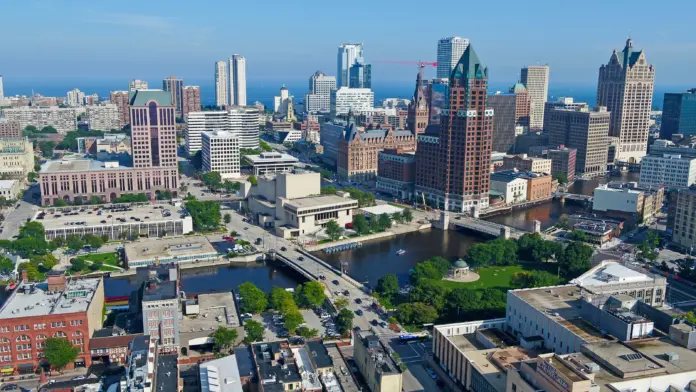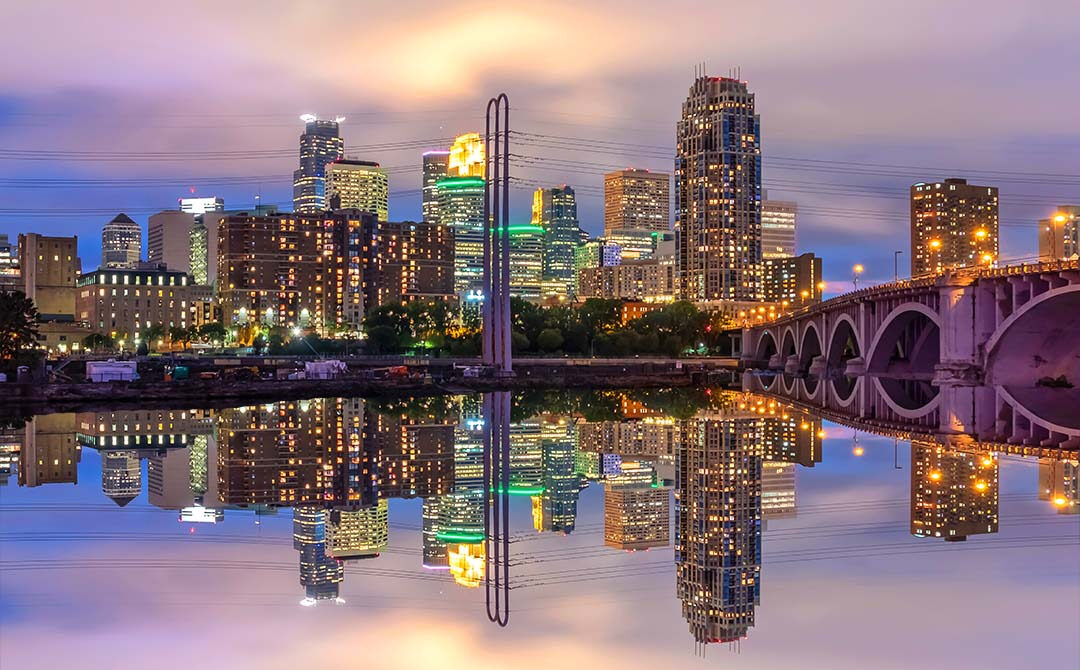Worst U.S. Cities for Black Americans to Live in 2025: The United States is comprised of some cities that are harder places for Black Americans to live. These cities have big problems. There are high poverty rates. Income gaps between black and white persons are large. Schools are not good. Jobs may not pay enough. Additionally, there are more people of Black skin in jail living in these cities.
Racial inequality remains one of the most critical and enduring challenges in the United States. Despite civil rights gains over the past century, systemic disparities in wealth, education, housing, and criminal justice continue to shape the lived experiences of millions of Black Americans. In 2025, these inequalities remain particularly stark in certain urban areas, where local policies and socioeconomic dynamics have either reinforced or failed to redress historical injustices.
Analyzing conditions at the city level is essential for a clearer understanding of where Black Americans face the steepest challenges. National statistics often obscure deep local inequities, while city-level data reveals how municipal policies, geography, and demography intersect to affect residents’ lives. This report evaluates cities across the United States to identify where Black Americans are most disadvantaged based on several key indicators. By highlighting these disparities, we aim to draw attention to systemic issues and encourage accountability, reform, and equitable development.
Methodology
We used a combination of publicly available datasets and reports to assess:
- Median household income by race
- Education access and graduation rates
- Employment and unemployment rates
- Crime and incarceration statistics
- Homeownership and housing stability
- Health care access and public services
- Residential segregation metrics
Sources include the U.S. Census Bureau, Bureau of Labor Statistics, FBI Uniform Crime Reporting, National Center for Education Statistics, and independent research from policy think tanks and civil rights organizations. We also reviewed peer-reviewed academic studies and conducted interviews with policy experts, educators, and local leaders to better understand each city’s context.
Historical Context: Why These Gaps Exist
Legacy of Redlining and Discriminatory Housing Policies
Beginning in the 1930s, federal programs and banks designated Black neighborhoods as high-risk investment areas. Known as redlining, this practice made it nearly impossible for Black families to obtain home loans or insurance. These policies contributed to entrenched residential segregation and denied Black families the opportunity to build generational wealth through homeownership. The effects of redlining are still visible today, with predominantly Black neighborhoods continuing to suffer from underinvestment and lower property values.
Education Disparities
Historically, Black children were often denied equal educational opportunities. Even after legal desegregation, many schools remained functionally segregated due to housing patterns. Schools in majority-Black neighborhoods continue to receive less funding, have higher teacher turnover, and offer fewer enrichment programs than those in wealthier, whiter areas. Additionally, standardized testing practices and school disciplinary policies disproportionately penalize Black students, creating long-term consequences for educational attainment.
Mass Incarceration
The War on Drugs and tough-on-crime policies led to the over-policing of Black communities. Today, Black Americans are incarcerated at five times the rate of White Americans. Incarceration disrupts families, reduces lifetime earnings, and limits opportunities for civic participation. A criminal record can impact access to housing, employment, and even voting rights. The pipeline from underfunded schools to prisons remains a systemic issue that perpetuates cycles of disadvantage.
Economic Marginalization
Black workers have historically been underpaid, underrepresented in high-paying industries, and excluded from unions. Wage discrimination, occupational segregation, and unequal access to business capital have sustained the racial wealth gap. According to the Federal Reserve, the median wealth of Black households remains less than 15% of White households. Entrepreneurship, often seen as a pathway to wealth, is also less accessible due to credit disparities and lack of generational financial support.
COVID-19’s Lasting Impact
The pandemic exposed and exacerbated these inequalities. Black Americans were more likely to work frontline jobs, suffer job losses, and live in overcrowded housing, leading to higher infection and death rates. Many Black-owned businesses closed due to limited access to relief funding. Health disparities, such as higher rates of pre-existing conditions and limited healthcare access, also contributed to disproportionate impacts. The post-pandemic economic recovery has been uneven, with many Black communities still struggling to regain lost ground.
How We Identified the Worst Cities
To identify the worst cities for Black Americans in 2025, we ranked urban areas using the following criteria:
Economic Indicators
- Median income of Black households
- Poverty rates
- Unemployment rates
- Cost of living vs. local wages
Cities with large income gaps between Black and White residents or with high Black poverty and unemployment rates scored lower. We also considered job accessibility and opportunities for upward mobility.
Education Access and Outcomes
- School funding and student-teacher ratios
- Graduation and college enrollment rates among Black students
- Local availability of affordable higher education options
The quality and equity of education directly influence long-term economic success. Cities where Black students consistently underperform due to systemic underfunding or lack of access to postsecondary education were flagged as high-risk.
Criminal Justice Disparities
- Disproportionate arrest and incarceration rates
- Police funding and use-of-force statistics
- Jail alternatives and diversion programs
Policing practices and legal system biases can severely disrupt community stability. Cities with high levels of over-policing, limited accountability, or harsh sentencing practices faced lower rankings.
Housing Inequality
- Renter vs. homeowner ratios among Black residents
- Gentrification, displacement, and eviction rates
- Historical zoning and land use patterns
Access to stable and affordable housing is critical to financial security and quality of life. We examined cities where Black residents face significant barriers to homeownership or where displacement due to gentrification is accelerating.
Health and Public Services
- Access to healthcare, clinics, and insurance
- Infant mortality and life expectancy
- Availability of clean air, water, and green spaces
Cities that lack accessible healthcare and suffer from environmental racism often report worse health outcomes for Black residents. Public investment in infrastructure and safety nets was also reviewed.
Segregation and Social Inclusion
- Racial residential segregation index
- Community investment in majority-Black areas
- Disparities in public infrastructure (transportation, libraries, parks)
High levels of segregation often correlate with unequal access to resources and opportunities. Cities that showed stark divides in investment and access based on neighborhood racial composition scored poorly.
Each city was scored based on its performance in these categories, with input from academic studies, local news reports, and public policy reviews. Additional qualitative data, such as community testimonies and nonprofit findings, enriched our analysis and provided context beyond raw statistics.
Problems in These Cities
The distinction exists in many cities: Black people earn much less than white people. Life gets more difficult due to the wage gap. That means a smaller number of times you have a chance to save money. This also means having less money to spend on having a school or a home.
An added problem is poverty. In the worst of the cities, more than 30 per cent of Black residents live in poverty. By not having it, they do not have enough money for basic needs. Coffey finds it hard to pay for food, rent, and health care.
Education is another issue. Both Blacks and whites in these cities attend low-quality schools, and many of the Black children attend these schools. Later on, it is harder to get a good job if it’s difficult to go to good schools. Education is important to a better future, but not always fair or equal.
1. Milwaukee, Wisconsin
Black Americans are among the worst off in Milwaukee. The income gap is large. Black families make about half as much as white families. Nearly 40% of Black people at home in poverty. The schools in Milwaukee also struggle.
Its high unemployment rate is among Blacks. In that, many Black people are looking for jobs but aren’t finding them. In jail, black people are also more likely. This has been a case of ongoing problems for years.
Also read: Top 10 Small Towns to Retire in America (2025 List)
2. Minneapolis, Minnesota
The list also includes Minneapolis. Here, George Floyd was killed in 2020. That exposed how police treat Black people. The problems go far beyond the police. Less is earned by black families than white families in Minneapolis. The gap is wide.
Black residents are also unemployed. Less is done to close the gap at the school level. The black community of this city needs serious changes.
3. Peoria, Illinois
Another place where Black people face many struggles is in Peoria. Black families earn very low incomes. The poverty rate is over 30%. Black people do not own homes, and jobs don’t pay well. As a result, it becomes harder to build wealth.
In Peoria, there is a very low percentage of Black adults who have a college degree. This adds to the problem. Without an education, my mother had trouble finding a better job.
4. Racine, Wisconsin
Racine has some of the same problems as Milwaukee does. Incomes are low. Poverty is high. Residence is segregated by black and white. Racine is not small when it comes to problems.
As often as Black kids in Racine attend school, its schools are underfunded. It will not help in their later life. Many Black families don’t make ends meet.
5. Waterloo-Cedar Falls, Iowa
Waterloo has the greatest unemployment gap of any country. White people have an unemployment rate of 3% or less; the number is about 15% for Blacks.
One-third of Black residents are in poverty. Black homeownership is very low. However, these numbers are only for a small city and large problems. Essentially, many Black families in Waterloo have no love for the system.
6. Danville, Illinois
Danville, Illinois, is also very taxing on black people. The median income for a black household is just over $26,000. Only about 4.3% of black adults had a college degree.
Unemployment is also very high. About 16 percent of Danville’s Black people last year couldn’t get a job there. However, the homeowner rates are high among white residents, and the rates of unemployment are relatively low.
7. Rochester, New York
There are some of the biggest education gaps in the country in Rochester. Black adults have only 14% with a college degree compared to almost 40% of white adults.
Black households earn about $32,000 annually, white households $66,000. There is an over 12% unemployment rate for Black residents. Less than 32 percent of Blacks in Rochester are homeowners.
8. Trenton-Princeton, New Jersey
Though Black incomes in Trenton lag a little behind other cities, the income gap is immense. It is also more than double the amount earned by white households.
There is also a big problem with unemployment. There are nearly 11.1 percent of Black residents out of work, compared to 4.4 percent of white residents. Only 18.4 percent of Black adults have a bachelor’s degree.
Conclusion
Many cities across the U.S. are hard places for Black Americans to live. Milwaukee, Peoria, Minneapolis, and others have wide income gaps, poor schools, and high unemployment. Cities like Danville, Rochester, and Springfield show that problems are not just in big cities. Even small places can have deep inequality.










